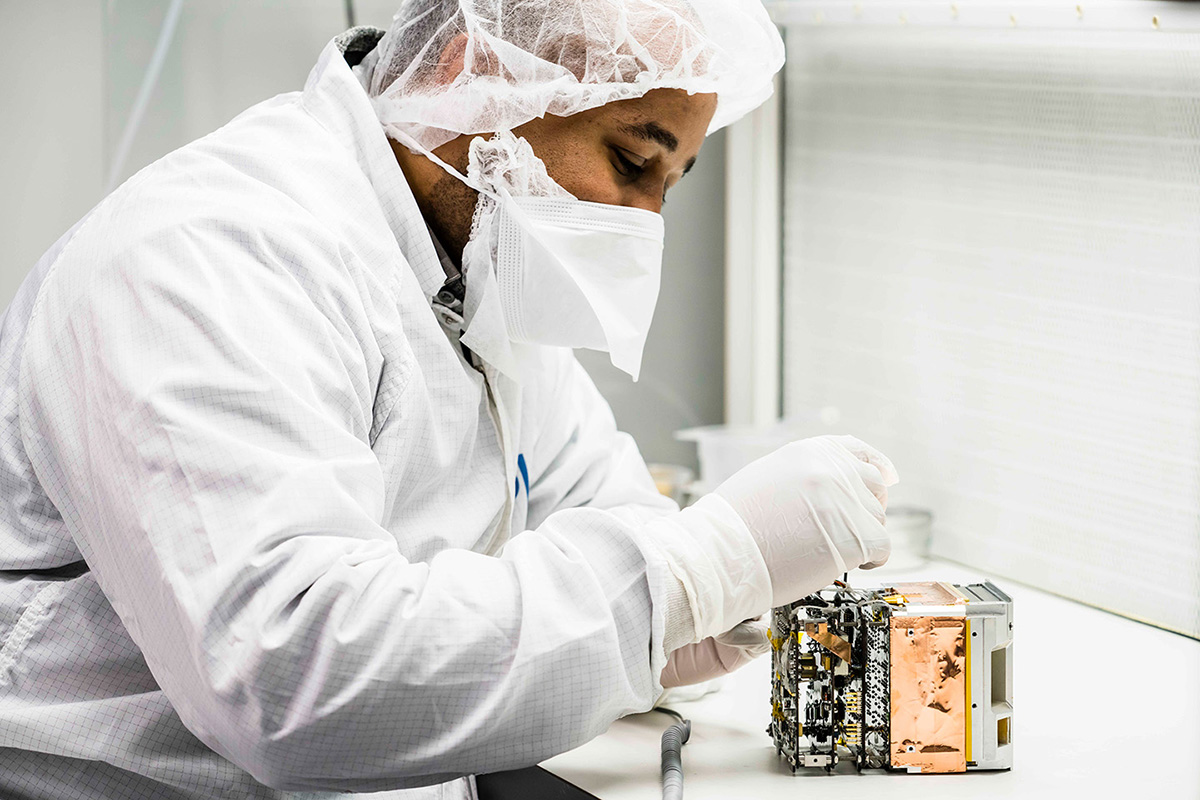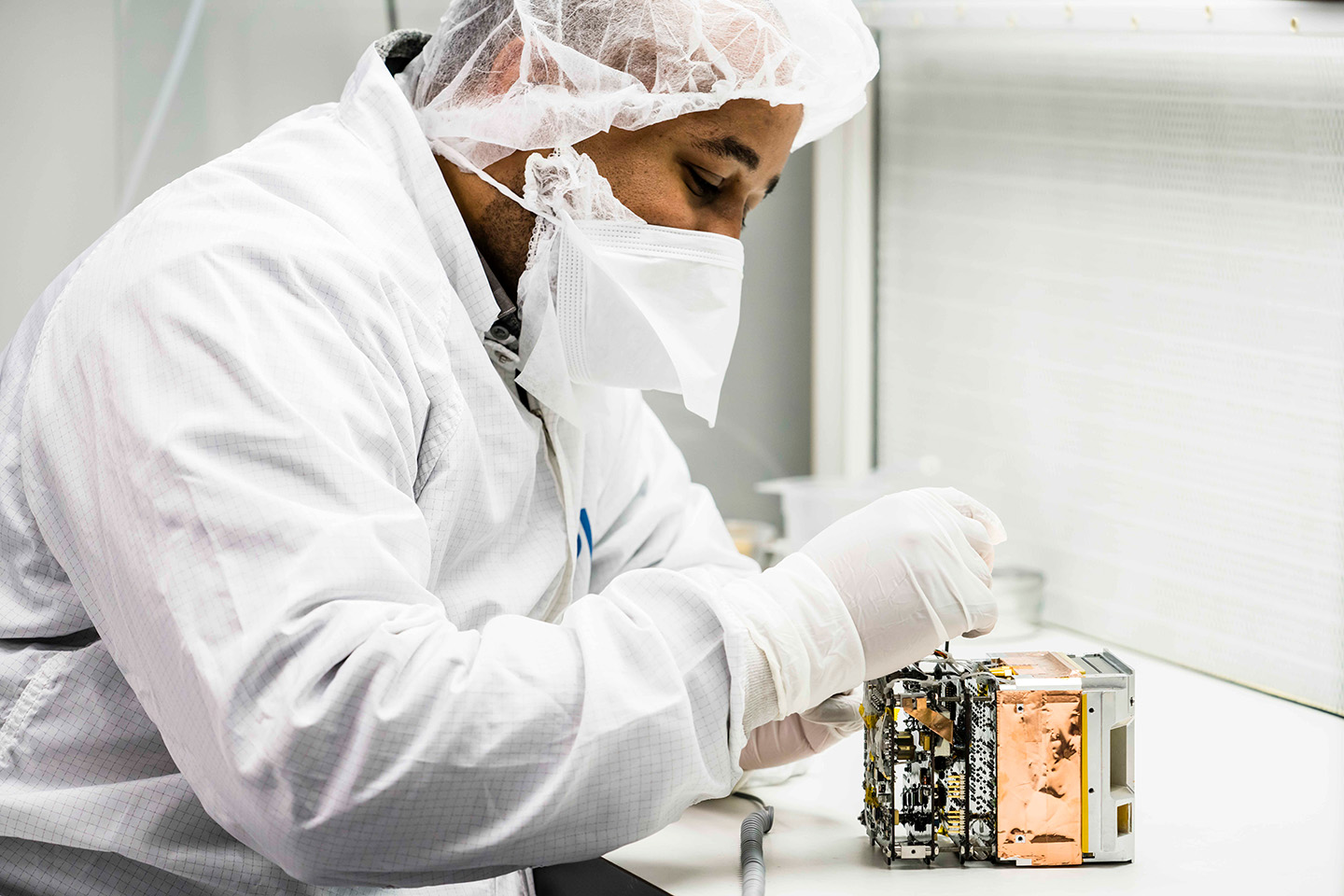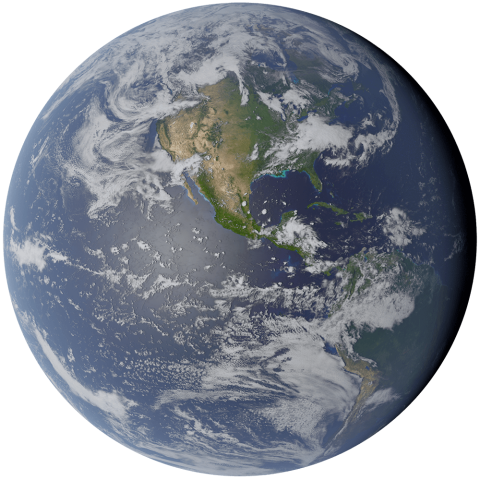About the Instrument
Instrument Type
Particle
NASA’s Relativistic Electron Atmospheric Loss (REAL) spacecraft, developed and managed by APL, is scheduled to launch from Vandenberg Space Force Base in California in July 2025. The CubeSat mission will investigate the mysterious forces that can cause energetic particles to fall from Earth’s radiation belts, posing a threat to orbiting infrastructure.
Like magnetic traps, Earth’s radiation belts—also known as the Van Allen Belts, after their discoverer James Van Allen—capture relativistic particles that have been driven to high energies. But occasionally, something shakes them loose so they fall spiraling into Earth’s atmosphere, sometimes in short, 100-millisecond microbursts, other times in waves that can last minutes to hours. Scientists suspect certain types of plasma waves are responsible for the fallouts, and REAL will help find out for sure.
As the CubeSat flies in low Earth orbit, it will point this particle detector along Earth’s magnetic field to watch as energetic electrons and protons enter the atmosphere. From there, it can simultaneously measure the quantity, energy, and angle of the particles as they fall into the atmosphere—a first-of-its-kind capability— making it possible for scientists to identify the forces that shook those particles free in the first place.
The REAL CubeSat mission is led by Dartmouth College in collaboration with APL, Montana State University, and Boston University. Funding for REAL is provided through NASA’s Low-Cost Access to Space program. REAL was sent to space through NASA’s CubeSat Launch Initiative.



